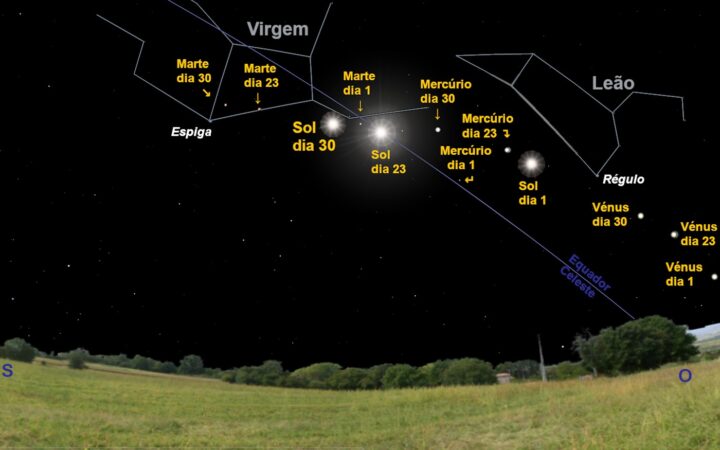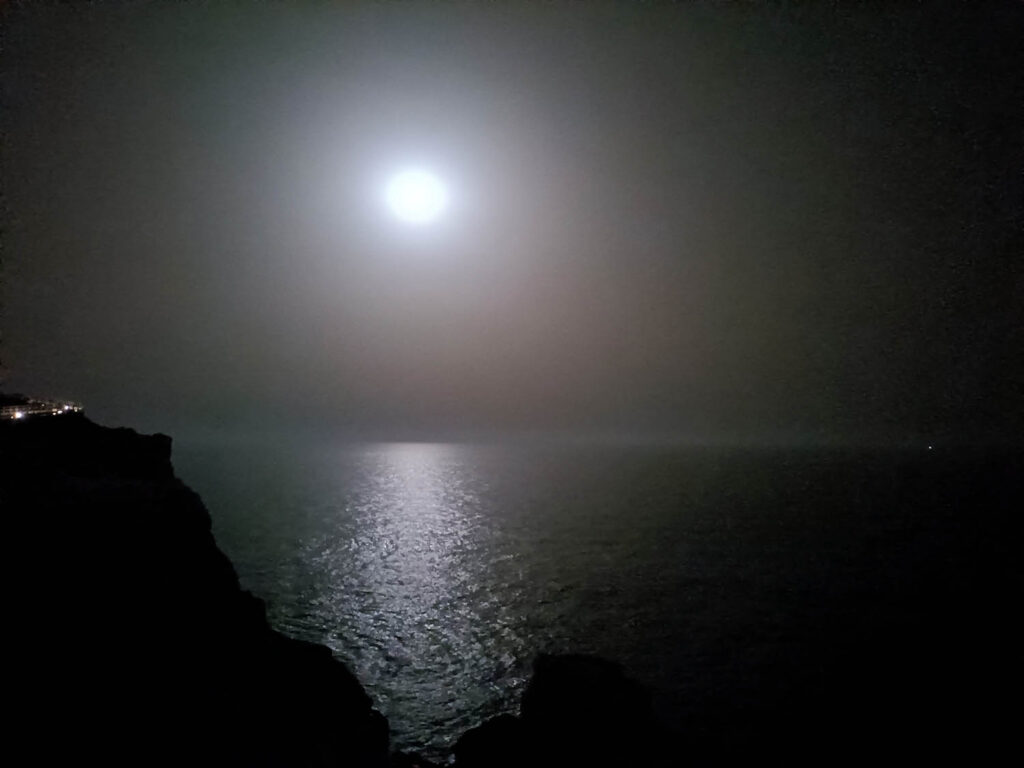The beginning of September will be a good opportunity to appreciate the way the Moon moves east over time. While at 22:30 pm on the first Monday of the month, the 4th, our natural satellite will be born next to the planet Jupiter, at 23:00 pm the following day we will witness the birth of the Moon next to Sete-Estrelo.
The latter consists of a group of stars that formed together (which is called a star cluster) that appear to swarm the back of the Taurus constellation.
In turn, on the 6th, the crescent moon will take place, with the Moon rising next to the horns of the Taurus constellation just before midnight.
On the 12th, the Moon will reach its apogee, the furthest point in its orbit from the Earth, being around 406 thousand kilometers from us. During this ephemeris, the Moon will be located between the constellations of Leo and Cancer.
Next to this last constellation we will find Venus, a planet that these days appears as the morning star.
The new moon will occur during the early hours of the 15th. This lunar phase occurs when the Moon is in the direction of the Sun, preventing observation.
Therefore, we will only see the Moon again in the early evening of the 16th, when it will be so close to the direction of the planet Mars that, in North America, it will even be possible to watch the Moon pass in front of this planet.
On the night of the 17th, observing the Moon will be easier, as it will be seen further east, located next to the star Espiga in the constellation Virgo.
On the 19th, the planet Neptune will be in opposition, that is, in a position diametrically opposite to that of the Sun. Despite this being the occasion in which Neptune is closest to us, with its side facing us fully illuminated by the Sun, its Observation will continue to require the use of a telescope or good binoculars.

On the 21st, the twentieth anniversary of the end of the Galileo mission, belonging to the US space agency NASA, will be celebrated.
This project consisted of sending a space probe (of the same name) to the planet Jupiter, in order to study the composition of its atmosphere, and get to know its moons better.
For fourteen years, data from the Galileo satellite allowed us to better understand the volcanism of the Jovian moon Io, supported the possible existence of an ocean beneath the surface of the moon Europa (pointing to the same possibility in the case of the moons Ganymede and Callisto), as well as allowing discover a very thin system of rings orbiting around Jupiter.
In order to avoid potential contamination of the Jovian moons, this mission ended with the Galileo probe plunging into Jupiter's atmosphere.
This planet and its moons remain in our minds, as demonstrated by the recent launch of the European JUICE mission, which has Portuguese participation.
One day after this anniversary, on September 22nd, the planet Mercury will reach its greatest elongation (distance) to the west in relation to the Sun. This ephemeris gives us more time to observe Mercury. However, given its position in the sky, you will need to be an early riser.
On this same day, the first quarter will take place, occurring an hour after sunset.
At 7:50 am on the 23rd, the movement of the Earth around the Sun will cause the latter to be seen on the celestial equator line (projection of the Earth's equator on the celestial sphere).
In our country we call this event the autumnal equinox, because, from this moment on, the southern hemisphere of the Earth becomes more illuminated than the northern hemisphere, thus giving rise to Autumn in this part of the globe.
At dawn on the 27th, the Moon will be seen next to the planet Saturn, which, these days, is located in the constellation of Aquarius.
In the early hours of the 28th, the Moon will reach its perigee: the point of the lunar orbit closest to Earth (just under 360 thousand kilometers away from us).
For this reason, the full moon on the 29th will be slightly larger than usual, being the last of this year's four supermoons.
Good remarks!
Author Fernando JG Pinheiro (CITEUC and FCTUC)



















Comments